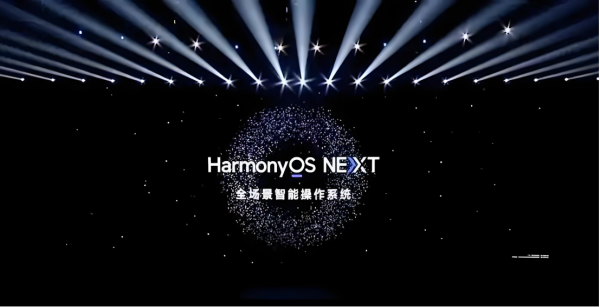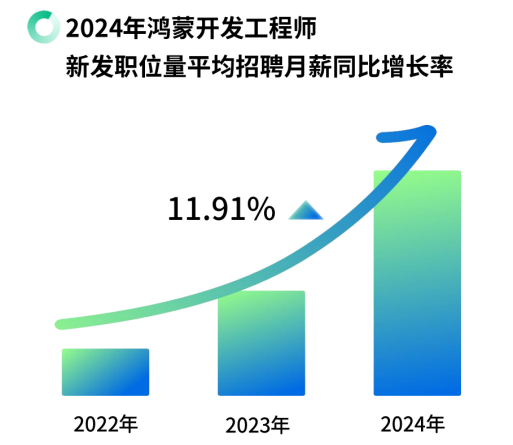HarmonyOS on the Rise: Is the Pure-Blooded Version Ready?
![]() 04/23 2025
04/23 2025
![]() 504
504

Rome wasn't built in a day.
Author/ Chen Dengxin
Editor/ Li Ji
Typesetting/ Annalee
HarmonyOS has once again undergone significant transformations.
Recently, Xie Cun, Director of the Information and Communication Development Department of the Ministry of Industry and Information Technology, stated: "We will persevere in promoting technological breakthroughs in hardware and software, strengthen the promotion and dissemination of outstanding results from typical application cases and pilot demonstrations in consumer electronics, encourage more apps to be listed on the HarmonyOS App Store, meet the diverse needs of the public, and continuously enhance the user experience."
This suggests that adapting to HarmonyOS is no longer optional.
What considerations lie behind the favorable news for HarmonyOS? Why are more apps still hesitant about HarmonyOS? To achieve "positive feedback," what efforts must HarmonyOS make?
Adapting to HarmonyOS has become a market consensus.
Currently, the international situation can be described as treacherous and volatile. Due to various reasons, technological competition has intensified, "high walls around small courtyards" are evident, uncertainty has significantly increased, and the extreme possibility of order reconstruction cannot be ruled out.
The problem is that no one wants to be "choked off." In fact, one must firmly hold the rice bowl in their own hands at all times, and core technologies must be autonomously controllable; otherwise, it is difficult to speak of initiative in innovation and development. Only in this way can one walk further and steadier without relying on others. Fang Xingdong, Director of the Digital Civilization Research Center at the Yangtze River Delta Institute of Tsinghua University, said: "We must abandon illusions, face reality, and calmly embrace this profound adjustment and change. As long as we respond appropriately, we will not only have the opportunity to achieve a qualitative leap in technological capabilities but also hope to fundamentally improve our innovation culture and strategic capabilities."
Against this backdrop, the importance of HarmonyOS is self-evident: it provides a Plan B for mobile phones and even the entire consumer electronics industry. If we encounter a "choking off" situation in the future, the industry will still have a fallback option.
This is not alarmist; Google's stoppage of licensing to Huawei has set a worrying precedent.
An internet observer told Xin Kedu: "Relying on Android doesn't necessarily mean being 'choked off'; it's just that the other side of the ocean doesn't want to choke off for the time being. Once the timing is right or conditions are met or they have the time, they will still 'choke off,' and even Google can't do anything about it."
As such, adapting to HarmonyOS has become a market consensus.
In retrospect, although HarmonyOS is not the first domestically self-developed mobile phone operating system, it is the first to enter the mainstream field of vision.
After continuous refinement, HarmonyOS 5 has become a "pure-blooded HarmonyOS" that completely abandons Android, leaping to become the world's third-largest mobile phone operating system, supported by over 20,000 HarmonyOS native applications and meta-services, including JD.com, WeChat, Douyin, iQIYI, Xiaohongshu, Alipay, and more.

More importantly, even "competitors" have come to support it.
For example, as Xiaomi's smart home brand, Mijia has over 527 million activated devices and is currently adapting to the HarmonyOS 5 system, with support expected by early June 2025.
It is not difficult to see that mobile phone manufacturers have a firm stance in the face of major issues.
"Interconnected Fish" stated: "The lesson of Huawei being sanctioned is still fresh in everyone's mind, and no one can guarantee that the same thing won't happen to other manufacturers. When a 'spare tire' becomes the primary choice and competitors become partners, the ultimate winner will not just be a single enterprise but the entire Chinese technology ecosystem."
It should be noted that Plan B is not the only one.
As early as around 2008, China gave birth to the first batch of self-developed mobile phone OSs, but they failed due to various reasons, and "optimizing Android" became a local characteristic. After entering 2023, a wave of "de-Androidization" emerged, with Xiaomi, Honor, vivo, OPPO, and others unanimously going their own way.
Xiaomi has self-developed the PengPai OS, Honor has self-developed the MagicOS, vivo has self-developed the Blue River BlueOS, OPPO has self-developed the Pantanal system, and combined with Huawei's HarmonyOS, all key players in the domestic mobile phone market now have their own self-developed mobile phone OSs.

In this regard, Lei Jun stated: "Xiaomi's PengPai OS is a comprehensive underlying reconstruction with a research and development team of over 5,000 people and seven years of effort. From now on, the performance of more devices will be completely unleashed; the intelligent system will have a unified AI brain; and the 'people-car-home full ecosystem' will have a solid technological infrastructure."
In a word, the industry has long been preparing for rainy days.
Three major challenges urgently need to be solved.
Despite this, HarmonyOS's ecosystem construction still has ground to cover.
The commercial barrier of a mobile phone OS is its ecosystem. Whether the ecosystem is in a continuous positive cycle determines the length of the road ahead, and whether the ecosystem is rich determines the height of the ceiling.
Yang Haisong, Vice President of the AI and Smart Full-Scene Business Department of Huawei's Consumer Business Group, once said: "Developing an operating system is just the tip of the iceberg, with only 1% completion. The remaining 99% depends on how many industry partners are willing to adopt your platform."
Everyone understands this principle, but it is difficult to put it into practice.
In retrospect, in 2019, Ren Zhengfei predicted that it would take two to three years to rebuild a good ecosystem. In reality, it took HarmonyOS four years to gain the confidence to part ways with Android.
This shows how difficult ecosystem construction is and that it requires sustained effort over a long period.
According to a report by "36Kr Brand": "Looking back at the growth in the number of HarmonyOS native apps, from the initial trial by more than 200 app vendors in January 2024, this number increased 20-fold two months later, reaching over 4,000 by March 2024; a year later, it quietly multiplied by 100, reaching 20,000 at the beginning of 2025."
Although the above achievements are commendable, the number of applications is still far from sufficient.
To put it simply, it is not enough to attract only top and second-tier applications from various industries; a massive number of mid-tier and tail-end applications also need to participate so that the HarmonyOS ecosystem can achieve "positive feedback."
Huawei is fully aware of this.
In his first letter to all employees in the new year of 2025, Yu Chengdong stated: "The torrent of the times is rushing towards us, and HarmonyOS will claim one-third of the world. This is the responsibility and mission bestowed upon us, this generation of terminal people, by history. In 2025, HarmonyOS's ecosystem will intensify investments, and 100,000 apps will be a sign of a mature ecosystem. This is a critical goal for the next six months to a year."
However, mobilizing the enthusiasm of small and medium-sized developers is not an easy task.
First, there is the issue of cost.
HarmonyOS app development supports "once developed, deployed on multiple ends," allowing a single investment to be displayed on terminals such as mobile phones, tablets, and smart homes. However, this means building a new stove in addition to iOS and Android, and the increased cost is a very real issue for small and medium-sized developers.
According to a report by "Futurist": "For an app of WeChat's size, the workload of adapting to HarmonyOS is comparable to redeveloping it from scratch, requiring the assembly of a development team of the same scale as iOS and Android, with at least a 30% to 50% increase in developers and resources."
What is more troublesome is that there is a significant premium on the salaries of HarmonyOS development engineers.
The "2025 Fall Recruitment Insight Report for Fresh Graduates in the Digital Technology Field" shows that as of November 2024, the average monthly salary for HarmonyOS development engineers increased by 11.91% compared to the same period last year, with salaries being 1.22 times that of other technical positions.
In other words, adapting to HarmonyOS requires more financial investment.

Second, there is the issue of habit.
Although HarmonyOS is growing vigorously, with the number of HarmonyOS ecosystem devices exceeding 1 billion, its overall market share is not high, and Android has occupied developers' minds for many years.
After all, adaptability and stability both require the test of time.
A market insider told Xin Kedu: "When the pure-blooded HarmonyOS was first launched, its reputation was not very good, and some developers wanted to wait until the system was more mature before making plans to save time on the break-in period."
Public information shows that from October 2024 to March 2025, pure-blooded HarmonyOS collected over 4 million pieces of user feedback, driving the system to complete over 30 iterations.
Such a huge amount of user feedback indirectly indicates that the system still needs some time to mature, so it is reasonable for some small and medium-sized developers to wait and see.
Third, there is the issue of expanding the foundation.
At present, although HarmonyOS has shown a trend of flourishing, the application scenarios of pure-blooded HarmonyOS are limited due to its high requirements for devices.
This is not conducive to small and medium-sized developers breaking into the market.
"Smart Cat" stated: "Compared to the previous HarmonyOS 4.2 and 4.3 systems, pure-blooded HarmonyOS has more useful features for interconnection and sharing. For example, the previously popular feature of fetching objects through the air requires devices that support the HarmonyOS Next system. Currently, the cheapest Huawei phone that supports the HarmonyOS Next system is the nova12, and for tablets, it is the MatePad 11.5S Flex version."

Of course, as Huawei's entire suite of new products continues to expand, the basic disk of pure-blooded HarmonyOS will also expand accordingly, and this problem will naturally be resolved.
It is evident from the above that developing a self-developed mobile phone OS is a time-consuming and arduous process that requires significant material, human, and financial resources and cannot be accomplished overnight.
Huawei's 2024 annual report shows that its global sales revenue for the year was 862.1 billion yuan, an increase of 22.4% year-on-year; net profit was 62.6 billion yuan, a decrease of 28%; and research and development expenses were 179.7 billion yuan, accounting for approximately 20.8% of annual revenue. The cumulative R&D expenses over the past decade have exceeded 1,249 billion yuan. "In the next three years, we will go against the economic cycle, increase strategic in-depth investments, develop in a staggered manner, and make pressure investments in core technologies."
With high investments, Huawei can afford to fight a "protracted war." Then, with the help of multiple forces, it is highly probable that more apps will be listed on the HarmonyOS App Store in the future, and the ecosystem of pure-blooded HarmonyOS will inevitably become complete sooner or later. We might as well be a bit more patient and tolerant towards it.
After all, Rome wasn't built in a day.






